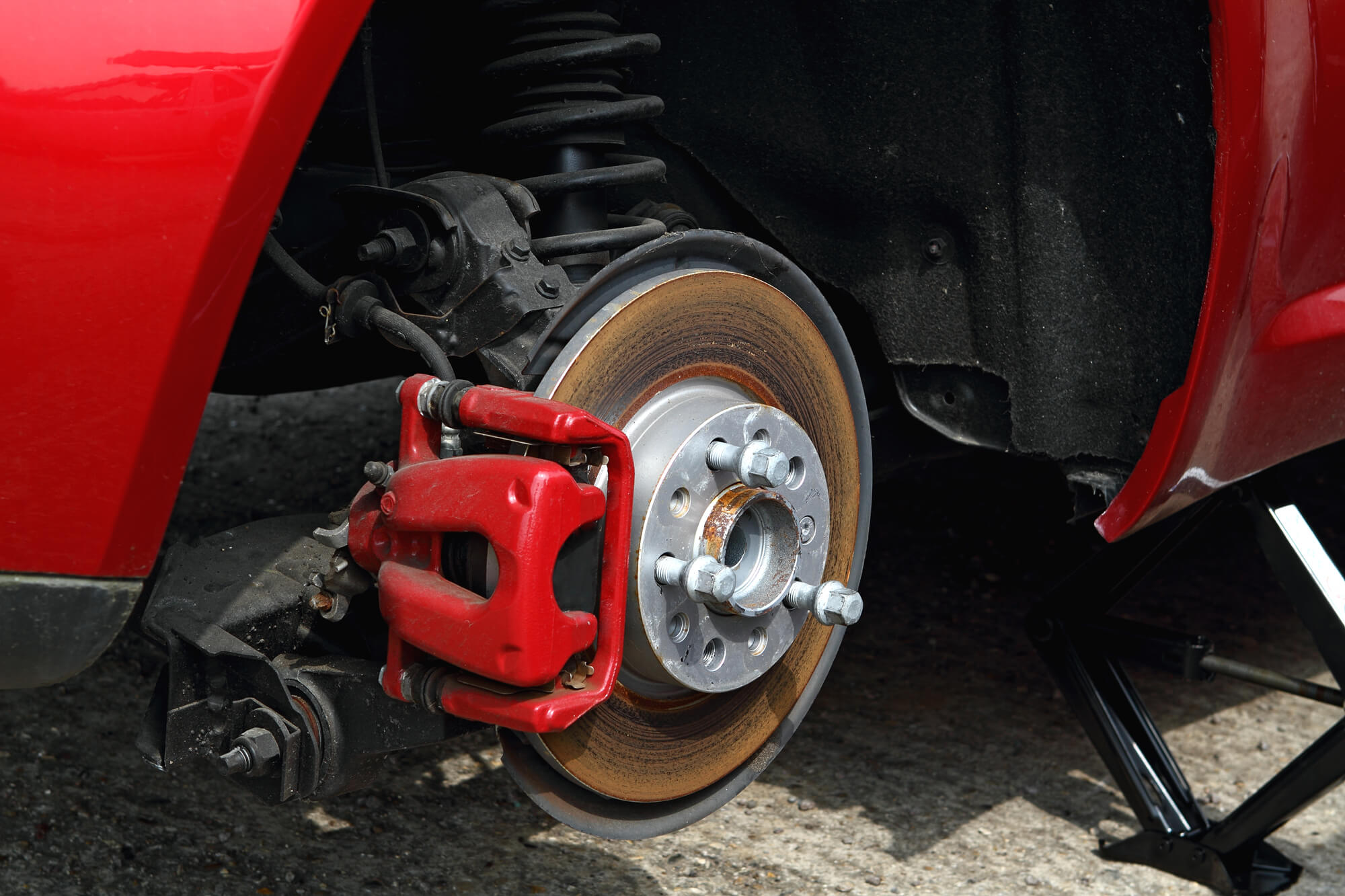Brake Wear & Tear Explained

While brakes may seem relatively simple, there are several different pieces that go into ensuring they work well and keep you safe on the road. Staying on top of maintenance is critical, so it helps to understand the mechanisms behind different types of brake systems, what causes them to wear out and which parts may need replacement or repair. Here’s what you need to know.
What Causes Wear and Tear on Brakes?
Brakes typically last for approximately 75,000 kilometres. However, their lifespan varies based on driving conditions, your driving habits and the type of brake pads you use. Some vehicles have warning lights indicating when brake pads are wearing thin. Still, getting your brakes inspected regularly by a professional technician is always a good idea.
Brake Parts to Repair or Replace
Your brakes have several components that may need repair or replacement over time. Some of these parts are:
- Brake pads
- Brake shoes
- Rotors
- Callipers
- Fluid lines
Each of these parts must work well for your brakes to perform correctly. A brake service check by a trained and certified technician will ensure all the elements are operating safely.
How Disc Brakes Work
In cars with disc brakes, disc-shaped metal rotors are located inside each wheel. When the brake pedal is pressed, callipers force the brake pads against the rotor. As the pressure on the pedal increases, the wheels slow down. Disc brakes are considered safer and more efficient than drum brakes but are more expensive to repair. Most cars have them on the front wheels, at the very least.
How Drum Brakes Work
Drum brakes are shaped like small, round drums. They’re found next to the car’s wheels and turn with them. When pressure is applied to the brake pedal, the shoes inside the drum press against the drum’s walls, gradually bringing the wheel to a stop. While these brakes are cheaper to maintain, they can collect water, which impairs performance.
How Much Brake Wear Is Acceptable?
When it comes to brake wear, determining what’s acceptable requires careful consideration. Generally, brake pads are in good condition when they have around four to six millimetres of thickness remaining. However, brake wear can vary depending on factors such as driving style, road conditions and the make and model of the vehicle.
It’s always recommended to consult your vehicle’s manufacturer guidelines or have a professional accurately assess the condition of your brakes.
At What Level of Wear Should You Replace the Brakes?
While there’s no fixed mileage or time limit on brake life, a general rule of thumb is that brake pads should be replaced when they reach a thickness of around three millimetres or less. If your brake pads are worn down to this level, you’ll likely start to notice a decrease in braking performance.
Some signs to be aware of when braking are a squealing noise and a sensation that the pedal is sinking. If you observe any of these symptoms, it’s time to take your car to a technician to have the brakes replaced.
Driving Habits to Avoid Wearing Out Your Brakes
Poor driving habits can wear out your brakes. Adopt the following driving practices to minimize wear and tear on your brakes and extend the life of your brake pads:
- Maintain a safe following distance. Keep a safe distance from the vehicle in front of you to reduce the need for sudden and aggressive braking.
- Anticipate traffic and road conditions. Be aware of your surroundings and prepare for potential hazards so you can brake gradually and avoid abrupt stops.
- Avoid riding the brakes. Instead of keeping your foot on the brake pedal while driving, release the pedal when not actively braking to reduce unnecessary friction and heat buildup.
- Use engine braking. Downshifting and using engine braking techniques on manual transmission vehicles can help reduce reliance on the brakes in certain situations.
Why Your Brake Pads Are Wearing Out Unevenly
Brake pads are designed to wear evenly, but a few factors may contribute to uneven wear.
- Misalignment. If your car is out of alignment, the brakes on one side of the car will be used more than the brakes on the other side. This can cause the brake pads on the more heavily used side to wear out faster.
- Sticking calliper. If a calliper is sticking or seized, it can cause the brake pads on one side of the car to be applied more than the pads on the other side.
- Rotors. Warped or damaged rotors can cause the brake pads to wear unevenly.
Uneven brake pad wear can lead to decreased braking performance and can also damage the rotors.
Brake Repair and Replacement in Vancouver and throughout British Columbia
Whether your brakes are performing poorly or you simply want peace of mind on the road, trust the experts at Minit-Tune & Brake Auto Centres for reliable brake servicing. Check out our online coupons so you don’t miss out on great discounts. We have 15 convenient locations in B.C. and Alberta. Contact us today to speak with one of our car care professionals.
MINIT-TUNE BLOG
Minit-Tune & Brake Auto Centres Address Common Issues
Here at Minit-Tune & Brake Auto Centres in British Columbia, we’re always pleased to help our customers get the most out of their cars and trucks. To that end, we’ll add a relevant blog topic from time to time to keep you up to date and getting the most out of your vehicle.
